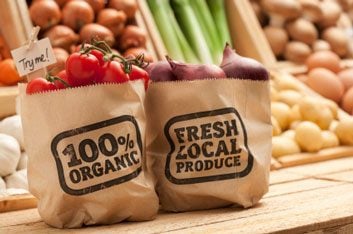
Is organic food worth the price?
There are so many decisions to make while browsing the supermarket aisles, not the least of which is whether or not to buy organic. More and more organically produced foods are making their way onto supermarket shelves, but there’s debate about whether they’re in fact healthier than the conventionally produced counterparts. Health Canada states that there isn’t any evidence to prove that eating food grown organically is any safer to consume than food that is not. Yet Andrew Hammermesiter, director of the Organic Agriculture Centre of Canada, says that organic food production has benefits beyond the quality of food you eat because it positively impacts the environment and animal welfare.
But one thing is for certain: organic foods do come with a higher price tag. Not all of us can afford to eat an entirely organic diet, but experts suggest that it might be worth shelling out for certain organically produced foods. Here are five foods worth buying organic.
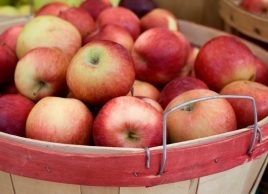
1. Apples
Hammermeister points out that there haven’t been any studies done in Canada to compare pesticide content of conventional produce with organic. But apples top the non-profit U.S.-based Environmental Working Group’s (EWG) “Dirty Dozen” guide to fruits and vegetables that contain the highest levels of pesticides. While Canadian growers tend to use less pesticide than they do in the U.S., the apples that we eat still contain high levels of chemicals. “Crops like apples are getting high levels of pesticides…in order to prevent a lot of disease and pests incidents,” Hammermesiter says. This is because North American shoppers prefer unblemished, perfectly shaped apples, which means farmers have to take extra precautions to produce fruit that meets our standards.
If you eat your apple a day, it might be worth paying a higher price for organic Canadian varieties, which are mostly grown in B.C.’s Similkameen Valley. The area’s dry climate combined with pesticide-free growing methods mean they may contain lower levels of chemicals than those grown conventionally.
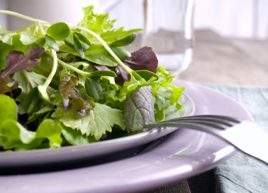
2. Leafy greens
Spinach, lettuce, kale and collard greens have all made their way onto the EWG’s “Dirty Dozen” list. Leafy greens grown in Canada may contain high levels of pesticides for much the same reason that apples do. “Consumers don’t like to see lettuce or spinach with holes in the leaves because they can’t stand the thought of a bug having been on their food,” says Hammermesiter. In order to make these greens look fresh and tasty for shoppers, conventional growers will often apply pesticides directly on the leaves we eat.
Salad lovers may want to switch to organically grown greens to reduce the level of pesticides they consume. But if you buy this food organic, you’ll have to get used to the idea that insects may have shared your lunch.
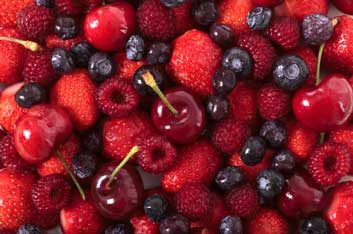
3. Berries
Canadian berries are harvested in the warmer months but we can pick up strawberries at our local grocery stores in the dead of winter. As these are shipped in from warmer countries that may have laxer pesticide regulations than we do in Canada, it might be worth spending the extra money on organic berries when local varieties aren’t in season. But here’s how you’ll get your money’s worth: Hammermeister says that because organic berries are smaller, you’ll get a greater number of them in your carton. That means you’ll be eating more of their antioxidant-rich skin than you would their larger, conventionally produced counterparts.
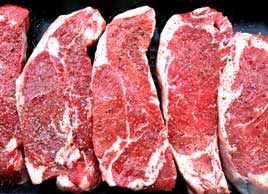
4. Meat
Health Canada and the Canadian Food Inspection Agency set regulations for how animals are raised and what antibiotics are used in conventionally produced meat. “But the bottom line is that when you have hundreds or thousands of animals concentrated in a very small space [as on many large conventional farms], there’s a higher risk of disease, and antibiotics and medications are used as standard practice as opposed to treating an ailment when it occurs,” says Hammermesiter.
In order for meat to be labeled organic, farmers are not permitted to give their livestock synthetic feed additives, antibiotics that promote growth or food that contains animal products or waste. They are required to include a certain amount of grass or vegetable product in their livestock’s diet at all times. Meat that’s grass fed contains higher amounts of conjugated linoleic acid (CLA), a fatty acid thought to boost immune function and reduce body fat deposits.
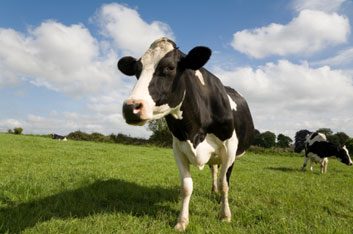
5. Dairy
Farmers are required to put organically raised dairy cows out to pasture for as much of the year as possible to allow them to graze on grass, while dairy cattle raised on larger conventional farms are often kept in a barn or holding pens. “In organic dairy production, because the cows are out on grass, you can get higher CLA content in the milk,” says Hammermeister. There are also strict regulations on the use of antibiotics and other medications when organic dairy cows become ill.
Always look for the Canada Organic Logo on dairy packaging to ensure the product is certified organic according to the Canadian Organic Standards.
Related:
• 5 ways to go organic on a budget
• Does organic mean healthier?
• Quiz: What’s your organic foods IQ?
